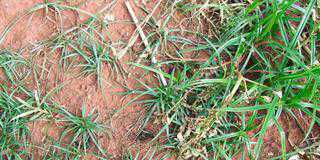Scrunch up some paper, put it in your hand, then make a fist and squeeze. This is an example of compaction. By squeezing it in your fist, you’re compacting the paper. You’ll notice how the ball became smaller and harder, or more tightly compressed.
We see compaction in the paths that cross the veld. Here, the coming and going of many feet over the years created a path and also hardened – compacted – the soil. When it comes to farming, soil compaction can’t be prevented, but it can be managed to maintain crop yield and irrigation efficiency, and to cut down on production costs.
READ: How humus can save the world
Tight soils need more horsepower to do the same operation, either a larger tractor (increasing the risk of further compaction), or running the tractor at a slower speed, which increases fuel and labour costs. Studies have shown that the toxicity of certain herbicides increase in compacted soils. That is, they become more potent and can harm crops that used to be immune to herbicide. The main problem with compaction is tightness. This means it’s harder for water to move through the soil and for roots to grow.
The result? Lower yield.
Compaction does some good, too. After the soil has been tilled and prepared for planting, for example, it is compacted to seal in the available moisture from evaporation. The soil is also less likely to blow away, and, after planting, compaction ensures the soil is in contact with the seed, allowing it to take in moisture and germinate properly. Some compaction within irrigation furrows is good, because this means less water seeps into the soil along the length of the furrow. But despite these benefits, compaction is a problem that doesn’t go away.
READ: Better soil with summer cover crops
Compacted soil has a poor gas exchange rate, meaning oxygen doesn’t get to roots quickly, and carbon dioxide concentration within the air space increases. This can slow the uptake of water from the soil, stressing the plant further. Then there are plough pans. Also known as a hardpan, this is a layer of dense or compacted soil usually found below the uppermost topsoil layer. It restricts root-growth into the deeper root zone, so that available water isn’t used. Other irrigation water trapped above the plough-pan layer can kill roots through lack of oxygen.
Beneficial leaching is limited by pan layers and the salt that a farmer is trying to remove from the root zone becomes trapped at the bottom, eventually reaching levels harmful to plant growth.













